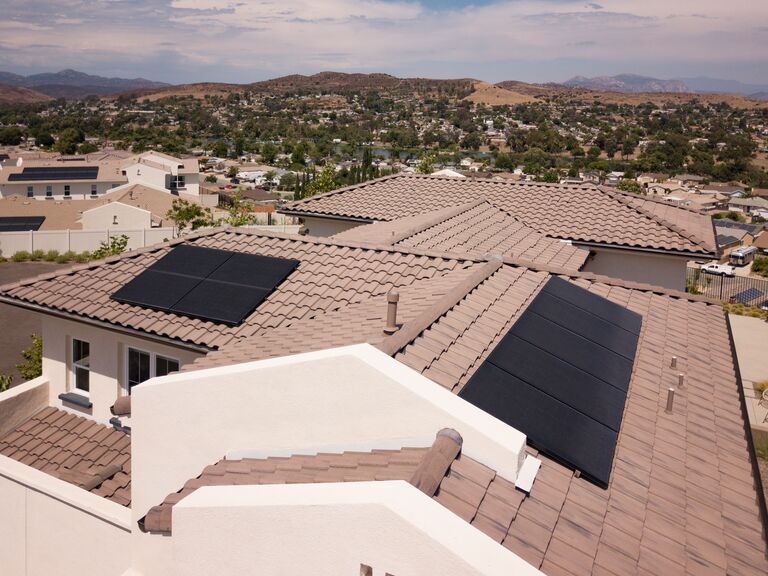
There’s been a lot in the news lately about California’s plans to update its solar net metering policy, otherwise known as NEM 3.0. But the information has been fluid and at times confusing for homeowners who already have solar panels, as well as those considering installing solar energy in the future.
To provide clarification, in this post we’ll present a quick overview of Net Energy Metering (NEM), how it started and where we think things are headed. We will also try to answer some of the most pressing questions homeowners have about the future of NEM in California.
What is Net Energy Metering (NEM) and why does it matter?
California’s initial NEM program was established in 1996 to incentivize utility customers who generated their own clean energy by offering financial credit on their electric bills for any surplus energy fed back to their utility.
NEM served as a very attractive incentive to many homeowners who were interested in getting solar energy but were uncertain about the cost advantages. Knowing they could “sell” any surplus energy back helped many consumers realize the financial benefits that justified installing solar systems on their homes. This was in addition to helping their community by adding renewable electricity to the utility power grid that everyone relies upon.
NEM 1.0 (as it became known) proved so successful in persuading homeowners to adopt solar power that by 2016, the designated 5% cap on how much residentially produced power could be sold back to utility companies neared its limit. This led the California Public Utility Commission (CPUC) to initiate a successor program called NEM 2.0, which was enacted on July 1, 2017.
The most notable change implemented with NEM 2.0 required all solar energy customers to switch to Time of Use (TOU) rates, which altered the price the utility company had to pay for surplus electricity based on time of day. While higher rates could be charged during times of peak demand, such as in the late afternoons, renewable energy generated during off-peak times was reimbursed at lower rates. Under NEM 2.0, you can get back almost as much as the retail rate but there’s a small amount deducted to help pay for the power grid.
What impact will NEM 3.0 have on NEM 1.0 and NEM 2.0 customers?
If you installed a solar system under NEM 1.0 or NEM 2.0, there will be no changes to your service agreements. All the benefits of NEM 1.0 and NEM 2.0 have been grandfathered in for existing customers, protecting your investment from any revisions in NEM 3.0 for the full 20 years you expected from the date of when you received Permission to Operate from your utility after your solar installation. Furthermore, if you’re thinking of adding additional solar panels in California, you can revise your solar system by up to 10% without any changes. You can also easily add battery storage, meaning there will be no changes to your current plan through your utility company.
Can homeowners still apply for NEM 2.0?
A completed Interconnection Application package will need to be submitted to your utility prior to 5pm PST April 13, 2023, in order to fall under NEM 2.0 rates and regulations. Keep in mind that it takes some time to prepare an application properly, so you will want to connect with your solar energy provider as early as possible before the deadline. However, do know that the best solar company will know what requirements are needed for you to be eligible for NEM 2.0. You can breathe a sigh of relief knowing that they will submit the necessary documentation on your behalf.
How will NEM 3.0 be different?
NEM 3.0, which was finalized on December 15, 2022, will include several changes from previous net metering plans, but there are no fixed charges or other fees specifically charged to NEM customers. In other words, NEM 3.0 does not include a punitive “solar tax.” However, there will be changes that impact the amount that homeowners with solar will be able to recuperate when selling excess energy back to the utility grid.
With NEM 3.0, the value of the credits for net exports will be tied to the state's Avoided Cost Calculator (ACC).
The ACC is a set of formulas that attempts to estimate the value of solar generation for the entire electrical grid, as well as other distributed energy resources, by modeling the utility’s avoided cost for not having to generate or procure a megawatt-hour of energy
The anticipated result will be an average net export rate of approximately 7.5 cents/kWh across all three utilities statewide by 2023 for any solar electricity that you do not consume in your home and that is “exported” back onto the grid. In the first five years of NEM 3.0, there will be a gradual reduction for implementing the revised rate structure that includes a small added value in the form of an export credit adder for PG&E and SCE (there is no adder for SDG&E). This adder will be on top of the ACC value so that customers who participate in the NEM 3.0 program sooner, rather than later, will experience higher export rates and savings. The adder value reduces by 20% per year, until the end of the five-year period.
All NEM 3.0 residential customers who go solar in the first five years of the new program will have higher export credits locked in for nine years (commercial customers don’t get an adder, but they get their export compensation locked in for 9 years). The value of the locked in export rate credits that the NEM 3.0 customer receives for the first five years of the NEM 3.0 program will be based on the year in which they start participating in the NEM 3.0 program. For example, for those who start participating in the second year of the program, the export rate credit adder will be 20% less than the export rate credit adder for those who started participating in the first year of the program. After the first five years of the program, there will be no export compensation locked in for 9 years; instead, the export rate will be variable, with the CPUC determining the ACC-based export value each year.
The other significant change with NEM 3.0 will be applied to the netting period, or the time period over which the utilities measure the clean energy being imported or exported. In general, longer netting periods have been better for solar power customers because any consumption can be offset with production. NEM 3.0 will instead measure energy using instantaneous netting, which means interval netting approximately every 15 minutes. This will lead to more NEM customers’ electricity registering as exports, now valued at the new, lower ACC value. This means that customers who pair their solar with electric appliances, whole-home energy management and/or battery storage (to capture more of the solar benefit by matching it to electricity consumption patterns or storing it in a battery system), can save more under this new program
In addition, NEM 3.0 offers different provisions and considerations for low-income homeowners and multifamily dwellings. Specifically, low-income homeowners who are on CARE/FERA rates, homeowners in single family homes that live in disadvantaged communities, and residential customers in California Indian Country are eligible for higher export rate credits.
What’s the key to getting the most out of solar under NEM 3.0? Solar + storage.
In short, the timing of your clean energy exports is the biggest determining factor in how they will be valued. The most valuable export rates and retail rates will be in the evening. This makes owning a solar battery very beneficial. During the night, your solar battery can kick on and power your home to avoid high retail rates, while sending any leftover energy back to the grid for maximum profit.
Installing a solar system is still a smart financial move for most homeowners. It’s a proven solution for minimizing electricity costs and keeping them stable. And when integrated with a battery storage system, it becomes an energy resource you can count on, even when the electrical grid goes down. On top of that, the possibility of new funding for the Self Generation Incentive Program (SGIP), which provides battery storage rebates for SCE, PG&E, SDG&E and SoCalGas customers, could further incentivize homeowners to pair battery storage with their solar system.

